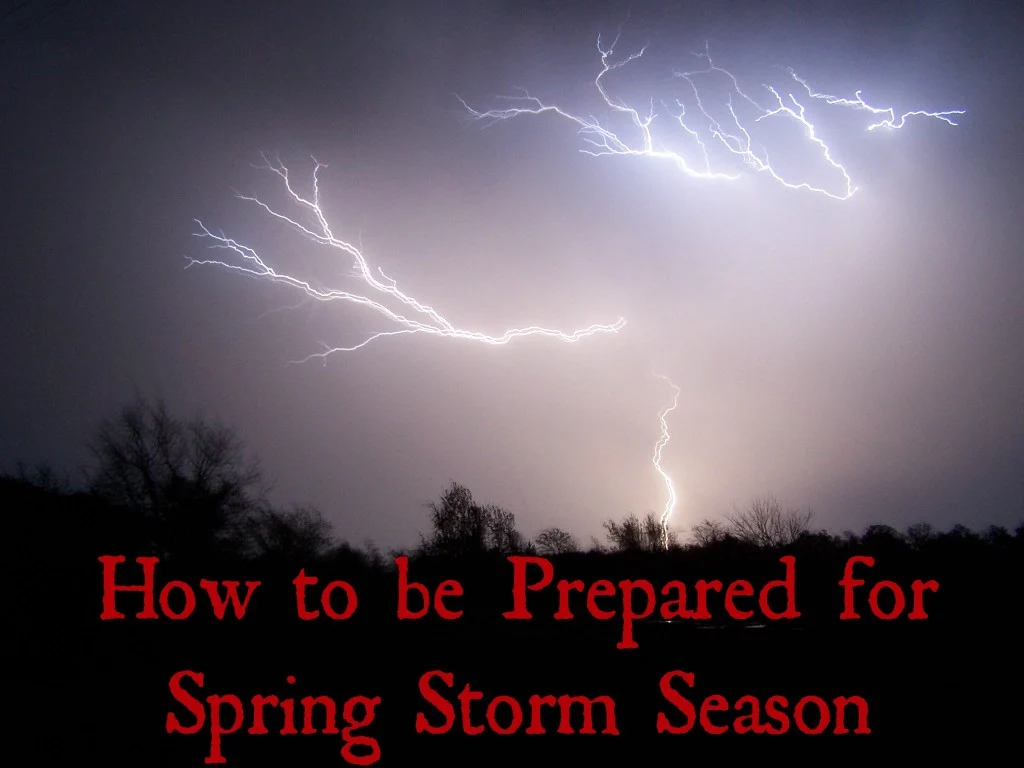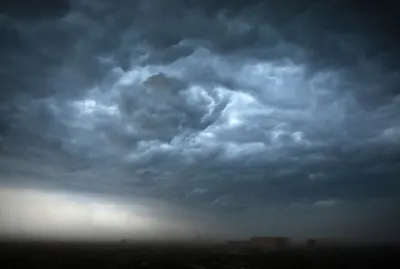It's Spring! Welcome beautiful flowers, green grass, new life, and soon, fresh vegetables and fruits from the garden. But Spring also means Storm Season. Here in Texas, we heard thunder and rain all night long. Thankfully it was just a thunderstorm for us, but in other areas of the storm, tornadoes and hail caused destruction.

Are you prepared for Storm Season? It is important to face the season with preparedness. FEMA has a great site, www.ready.gov that has plenty of good information and tips to prepare yourself and your family for storms or emergencies. The site has suggestions for preparing for every time of natural disaster, pandemic, technological and accidental hazards, terrorist hazards, and more.
The first step in preparing yourself is to create an emergency kit, make a plan of action, and also a family communications plan. What do you need to include in an emergency kit? You need to have enough food, water, and other supplies to last for 72 hours for your entire family, because in the event of a major catastrophe, it could take officials that long to reach you. Also, getting in touch with an insurance claim denial lawyer for your storm damage will guarantee you are helped financially to repair the damage.
Here is a list that Ready.gov suggests for your emergency kit:
Emergency Supplies:
Water, food, and clean air are important things to have if an emergency happens. Each family or individual's kit should be customized to meet specific needs, such as medications and infant formula. It should also be customized to include important family documents.
Recommended Supplies to Include in a Basic Kit:
- Water, one gallon of water per person per day, for drinking and sanitation
- Food, at least a three-day supply of non-perishable food
- Battery-powered radio and a NOAA Weather Radio with tone alert, and extra batteries for both
- Flashlight and extra batteries
- First Aid kit
- Whistle to signal for help
- Infant formula and diapers, if you have an infant
- Moist towelettes, garbage bags and plastic ties for personal sanitation
- Dust mask or cotton t-shirt, to help filter the air
- Plastic sheeting and duct tape to shelter-in-place
- Wrench or pliers to turn off utilities
- Can opener for food (if kit contains canned food)
Clothing and Bedding:
If you live in a cold weather climate, you must think about warmth. It is possible that the power will be out and you will not have heat. Rethink your clothing and bedding supplies to account for growing children and other family changes. One complete change of warm clothing and shoes per person, including:
- A jacket or coat
- Long pants
- A long sleeve shirt
- Sturdy shoes
- A hat and gloves
- A sleeping bag or warm blanket for each person
Below are some other items for your family to consider adding to its supply kit. Some of these items, especially those marked with a * can be dangerous, so please have an adult collect these supplies.
- Emergency reference materials such as a first aid book or a print out of the information on www.ready.gov
- Rain gear
- Mess kits, paper cups, plates and plastic utensils
- Cash or traveler's checks, change
- Paper towels
- Fire Extinguisher
- Tent
- Compass
- Matches in a waterproof container*
- Signal flare*
- Paper, pencil
- Personal hygiene items including feminie supplies
- Disinfectant*
- Household chlorine bleach* - You can use bleach as a disinfectant (diluted nine parts water to one part bleach), or in an emergency you can also use it to treat water. Use 16 drops of regular household liquid bleach per gallon of water. Do not use scented, color safe or bleaches with added cleaners.
- Medicine dropper
- Important Family Documents such as copies of insurance policies, identification and bank account records in a waterproof, portable container
Next, you should talk with your family about where you should go if each specific emergency were to occur. For example, if there was a tornado warning, the best option would be to go to a cellar or basement. If you don't have access to either of these, an interior room on the first floor with a secure concrete slab is the next best option. Find more information at http://www.ready.gov/tornadoes.
Lastly, you should form a family communications plan in case your family is not together when disaster strikes. It is important to talk about how you will get to a safe place, how you will contact each other, how you will get back together, and what you will do in different situations. You should also talk to your child's school, daycare, baby-sitter, etc, about these plans. Ready.gov has a PDF that you can download to make this plan easily.
Have a fun, safe Spring and be prepared!


Kathleen
Tuesday 20th of March 2012
I'm guilty of planing to do this but never carryinig it out. I just haven't had the money to buy a good container and all the stuff I need. Thanks for the reminder though!
Rachael Ebner
Tuesday 20th of March 2012
Very good reminders. Thanks!
LaVonne
Tuesday 20th of March 2012
Wow! I need to get on the ball and get a good emergency storage set up. I am always interested in emergency preparedness. I have a friend who is really into it. I should ask her to do a guest post. Thanks for all the information.
Isra
Tuesday 20th of March 2012
Great list, kind of scary to think about, but it is important to be prepared!
Kecia
Tuesday 20th of March 2012
We don't have a supply kit for storms, but my hubby and I really should make one. I am going to use this list as a basis for ours. Thanks for sharing!!